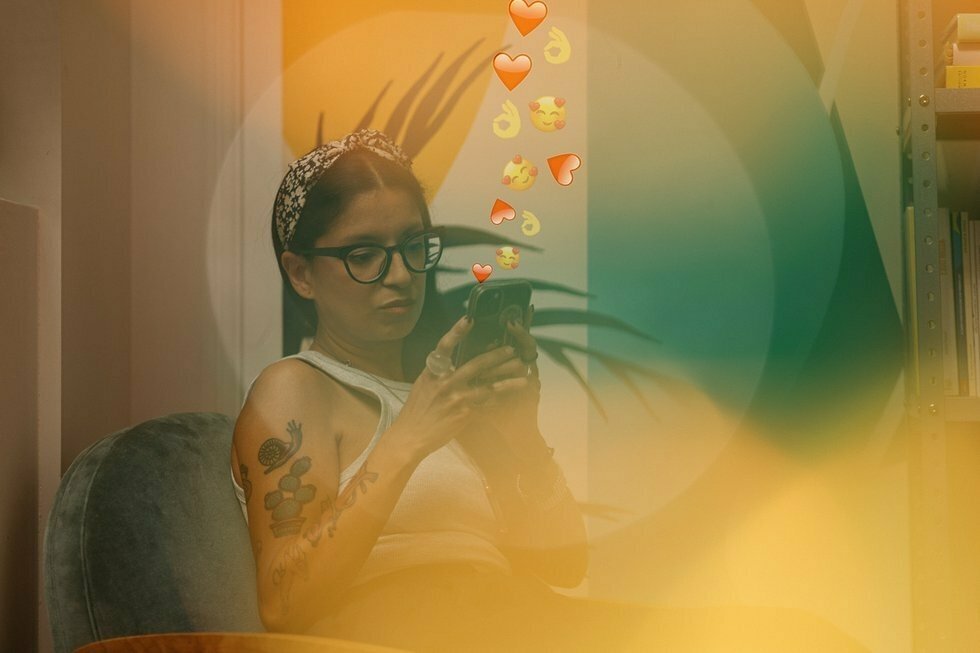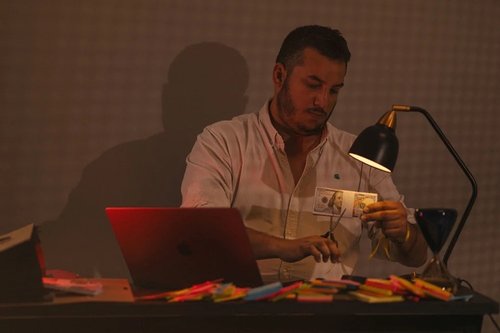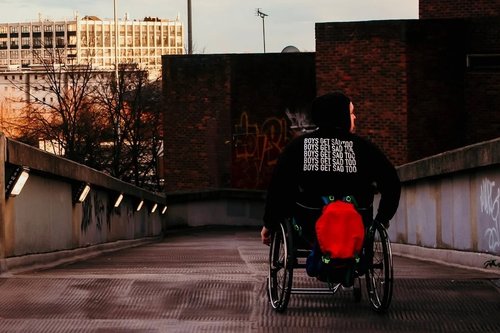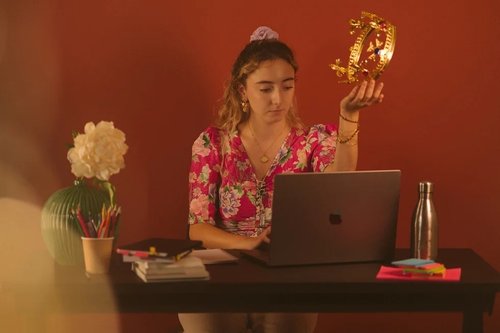It’s nice to be nice: 10 tips for crafting the perfect post-interview thank you note
Sep 06, 2023
4 mins


Freelance writer and translator, ex-recruiter
As interview follow-ups go, a thank you note is both simple and effective. It’s not going to take up a huge amount of your time or the recipient’s, but it will generate some goodwill and good feelings. While you might think the idea of a thank you note is old-fashioned, NY-based Career Coach and Speaker, Jess Wass, would disagree.
While the jury is out on whether a thank you note will have any sway over getting you the job, Wass explains that not sending one can definitely count against you, “The interview process is hard enough as it is, never give people an excuse not to move you on to the next round. A thank you note is an easy check box. It won’t detract from your experience, but it also won’t make you miss something. If someone else from that interview round sent a thank you note and you didn’t, now all of a sudden there’s a check in someone else’s box and not yours.”
Why send a post-interview thank you note?
- It’s a simple, low-effort way to follow up on your job interview
- It’s nice to be nice
- It’s an opportunity to remind the interviewer you exist
- It can count against you if you don’t.
Now you know why you’re sending the note, what about the how?
10 tips for crafting the perfect post-interview follow-up note
1. Send it via email
Nowadays there’s no need to send a physical note, a post-interview email will suffice. It’s delivered instantly and it’s what’s expected. Wass says, “I would send an email unless you’re interviewing with someone you know prefers a handwritten note. If you’re applying for a very creative role there might be a creative way to do it, but for 95% of us it should be an email.”
2. Send it one day after the interview
According to Wass, your follow-up email should serve to remind the interviewer who you are and what you’re about. If you send it the second you come out of the interview you’ve wasted an opportunity. Don’t leave it more than three days before sending it though, you’ll appear less keen.
3. Send a thank you note to each person on the interview panel
No matter how many people interviewed you, you should thank each of them personally and individually. Don’t send one email and copy everyone and don’t send the same email to each person separately—they talk! Wass says, “Every thank you note you send should be customized. You can use a template, but you should have sections where you customize it.”
4. Match the energy and tone of the interview
According to Wass, a simple rule of thumb for the tone of your email is, “It should be a mirror of the interview.” If the experience was formal then stick with formal, if there was humor then feel free to sprinkle in a little yourself. If it was friendly, go with that, but, says Wass, “Always be polite.”
5. Don’t be afraid to use AI
Wass explains that a lot of people (herself included) find it hard to start with a blank page. Let’s face it, we’ve all been stuck staring at a blank screen at some point! That’s precisely where AI can help. She describes herself as a big fan of tools like ChatGPT. However, there’s a big BUT. “You need to edit it with the specifics of your situation.” Use it to give you the bones of how to structure your email or to start you off, but always add your personal touch.
6. Remember to include the words ‘thank you’
It may seem obvious, but Wass has first-hand experience of receiving post-interview follow-ups that missed out on these essential two words. Make sure you’re actually saying thank you.
7. Always personalize
Never, never, never send a generic post-interview thank you note with no details or specifics. Wass says, “When I’ve been on the receiving end of thank you notes, to be honest, it’s one more email in your inbox, so when I see it’s super generic and there’s nothing specific in there and it looks like someone just copied and pasted, I think, you just wasted my time in reading this.”
Recruiters and interviewers are busy people with overflowing inboxes. Interview follow-up may be a formality, but a generic note means nothing.
Here’s how Wass suggests you structure your post-interview email:
- Start by thanking them for taking time out of their day for the interview
- Include a specific detail from the interview, perhaps something you talked about that takes them back to the moment. It could be something role-specific, but it could relate to something you discussed during small talk. For example, ‘It was nice to meet another person who went to this college,’ or ‘It was really nice to meet someone who’s had this experience,’ or ‘I really liked how you explained this project.’ Just something to ensure the receiver knows it’s not generic.
- Finish with one or two sentences that reiterate why you’re excited for the role and why you think you’re a great fit.
8. Include a closing statement
This point is included in the structure but it’s worth reiterating alone. Your closing statement is your opportunity to explain succinctly why you think you’ll excel in the role, especially if you feel you didn’t position yourself exactly as you wanted to at the interview. Wass shares an example: “After speaking to you about the project that’s coming up, I’m still really excited about this role. I know given my experience doing ABC, that I would be a really great asset to the team.”
Remember: The best time to stand out at an interview is during the interview, don’t try to go back to questions you answered during the interview or try to redo the interview. Particularly, don’t allude to anything you feel went wrong—the interview is done.
9. Avoid mistakes, unnecessary questions, and anything that can be perceived as careless
- Only ask a question if you have a burning one—the thank you note is not the best place for questions. The interview is the best time to ask questions. Interviewers are busy people and probably don’t have the time to indulge in lots of emails back and forth. Asking questions in your thank you note places a burden on the interviewer to reply.
- Use a spell check on your email or a tool like Grammarly, proofread, and proofread again.
- Don’t send it from your phone. This will often include a message at the bottom saying sent from your phone and this can be perceived as being sloppy or rushed.
- Don’t copy and paste the same generic email to everyone.
10. Don’t expect a reply
Wass explains that a post-interview thank you note is a human nicety. She adds, “I think it’s good to continue that practice. We should be in the practice of gratitude and thanking people for their time. It’s a lot of time and effort and work to be an interviewer.” This means you should never expect a reply. Wass suggests taking a leaf out of Adam Grant’s book Give and Take and being a giver. “It doesn’t need to be tit for tat.”
Photo: Welcome to the Jungle
Follow Welcome to the Jungle on Facebook, LinkedIn, and Instagram, and subscribe to our newsletter to get our latest articles every day!

More inspiration: Job interview follow-up

Young parents: How to negotiate benefits with a potential employer
While ‘more sleep’ may not be on the table, there are plenty of parental benefits you can ask for from a new employer.
Dec 20, 2023

Accepting a job offer below your salary expectations: Is it a smart move?
After a grueling hiring process, you receive a sub-par offer. How do you handle it?
Nov 07, 2023

How to ask about disability accommodations in an interview
Here's to knowing what you're entitled to, and then getting it.
Oct 24, 2023

Exiting gracefully: Navigating a withdrawal from the hiring process
Not a good fit? Salary below expectations? Got a better offer? There are plenty of reasons to pull out of the hiring process. Here’s how to do it.
Oct 18, 2023

Job hunt: Here's what you can negotiate beyond salary
PTO, equity, health insurance, student loan repayment ... yes, please!
Sep 21, 2023
The newsletter that does the job
Want to keep up with the latest articles? Twice a week you can receive stories, jobs, and tips in your inbox.

Looking for your next job?
Over 200,000 people have found a job with Welcome to the Jungle.
Explore jobs